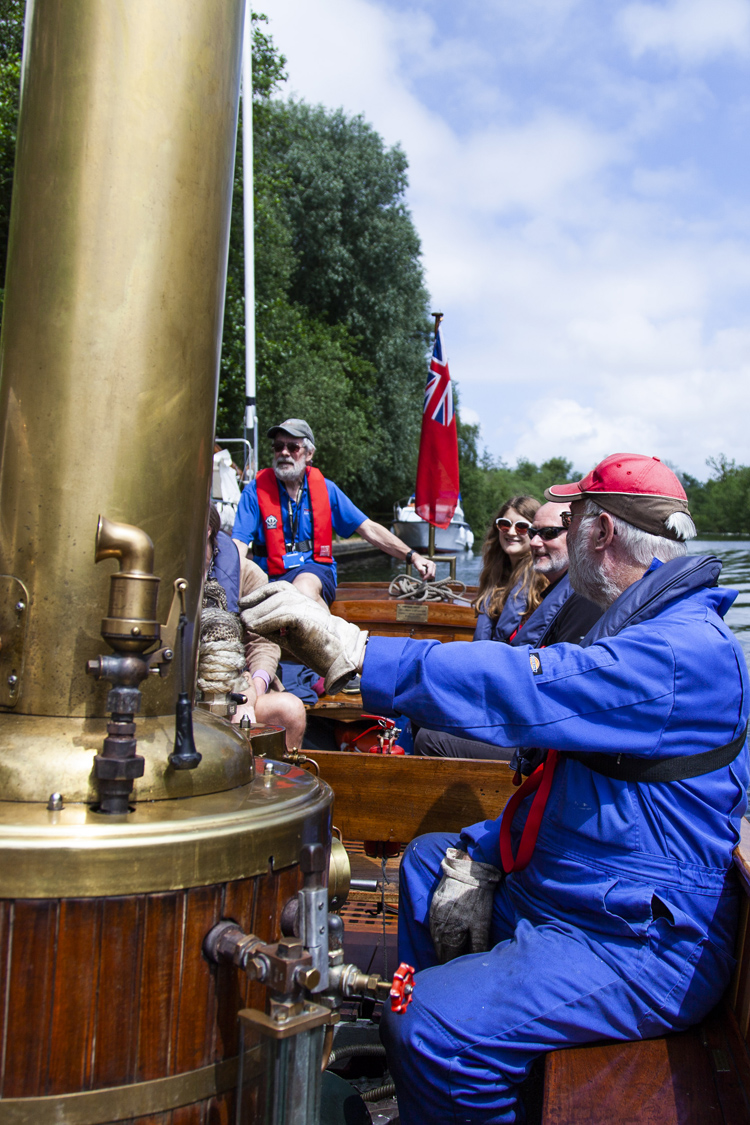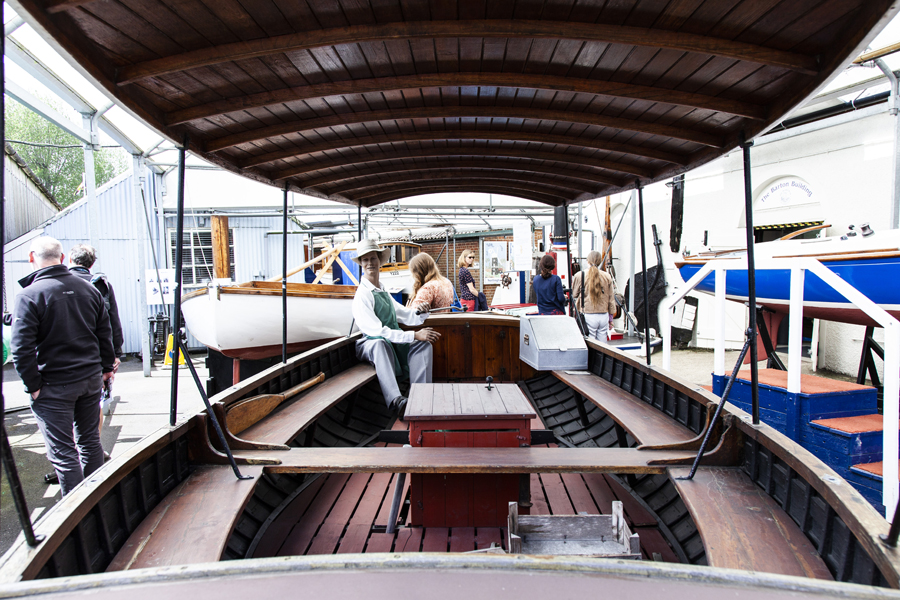


I am sat on a boat called Falcon. She is a collection of sleek teak and shiny brass fittings. Gages tick, water sizzles, oil gleams. Falcon is a steamboat based at Stalham and powered by coal, making her a traction engine of the water, with the focal point of her build being a brass chimney in her centre which catches the sun and sends the smell of the 19th century puffing out across the riverbanks. She sits low in the water, putting us eye to eye with the passing grebes. The sky is the same colour as the water below, and against its cornflower gaze Falcon’s flag floats lazily upon the breeze. It proudly reads, ‘Museum of the Broads’.
The Museum of the Broads has a lot to teach people. The national park might cover only 0.1% of the country but is home to a quarter of the UK’s rarest wildlife, it stretches through two counties, flows into a city and two ports, and its history is entwined inseparably with the people who live there, with the broads themselves having been dug by hand. So you can only imagine the array exhibits which have made their home here in this museum of many muses.
The first thing that strikes one is the sheer volume of unusual objects, each with its own tale to tell. In one room there is a cabinet of warbler eggs, a 21-pound taxidermy pike and a moleskin coat made of 640 skins caught in the Upton Marshes. Another room features the inside of a wherry, while another is all toolboxes and filament lamps, sou’westers and button-up lifejackets. The vessels within are tactile with their polished wood and streaks of brass. This is the sort of history that can be touched.
And that is the thing which makes the Museum of the Broads truly unique aside from its subject matter, the ethos of the museum is tactile. It’s not just about educating visitors but actively engaging them. There are selfie stations set out across the site, opportunities to tie boat knots and try on the outfits of yesteryear. You can ride the steamboat Falcon and you can attempt to brush up on your helmsmanship with their boat simulator. As you walk around one of the rooms, poetry quavers from a television screen which displays vintage footage of dazzling water which could just as easily have been taken today as 60 years ago.

And the museum is not only building a reputation for its unrivalled collections. The Museum of the Broads has become well known for its sell-out events. Those with children will love their Easter trails and Halloween events while those who are partial to a sophisticated evening will love their jazz events, where one can relax by the river, fizz-in-hand, listening to the tunes of the Reverie Jazz Trio. Art challenges, Viking days with RSPB displays and even a fishing jumble sale mean that there is always something going on at the Museum of the Broads.
Back on the steamboat and I can see a kingfisher dart from a branch, a tiny turquoise firework between the willow fronds. Water lilies are in full blossom and flag irises paint bright splashes of yellow against the bronze of the reeds. The Museum of the Broads isn’t just there to teach about the Broads but it is there for the public to truly experience the place and from the back of their steamboat, Falcon, it is clear why the public’s love of this local gem has endured for so long. With the smell of the steam engine and the warmth of the sun, who wouldn’t be desperate to return again and again?
The next event happening at the Museum of the Broads is a celebration of the Lowestoft and Oulton Broad Motorboat Club on Sunday 17 June. Some amazing modern and old power racing boats will be on display together with photos and information about powerboat-owning-celebrities and world-famous boat designers.